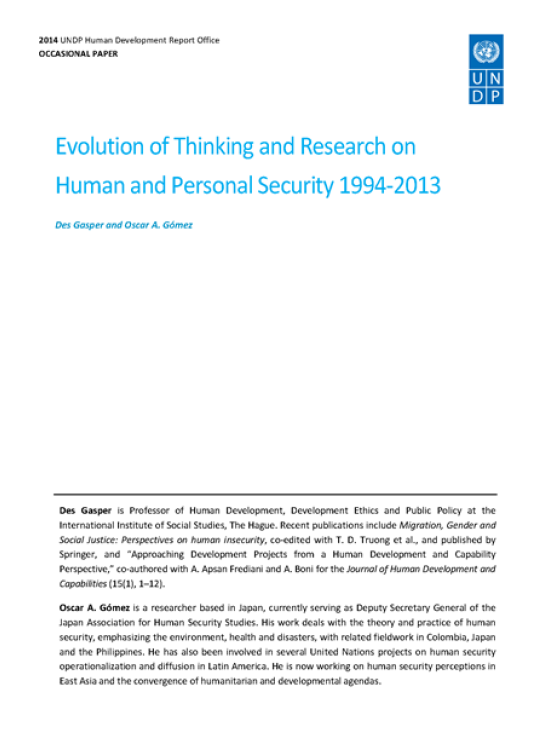Evolution of Thinking and Research on Human and Personal Security 1994-2013

Download Report by Language
Document
gomezhdr14.pdf
(480.72 KB)
Citation
Gasper, Des and Gómez, Oscar A.. 2014. Evolution of Thinking and Research on Human and Personal Security 1994-2013. New York.
Evolution of Thinking and Research on Human and Personal Security 1994-2013
Posted on: January 01, 2014
Human security analysis considers the intersection of deprivation and vulnerability, and is an essential part, or partner, of human development thinking, giving special attention to risks and forces of disruption and destruction. This paper highlights six strands or styles in such work since 1994: violent conflict, and its prevention and resolution; crime and ‘citizen security’; psychological insecurity; environmental change; comprehensive identification and comparison of all major threats; and study of selected priority threats in a particular time and place. The main attention in the paper goes to the first, second and fifth of these topics. The 1994 Human Development Report’s list of seven categories of frequently threatened values was not intended to promote consideration of each in isolation, for threats interconnect, their relative importance changes, and comparisons are required. The flexibility required runs counter to vested interests and established patterns of inclusion/exclusion; security is too often equated to familiar means instead of related to the changing agenda of threats. In each context, the paper advises regular alternation of broad-horizon studies to identify priority areas and their linkages, with narrower horizon studies that explore in depth the threats and alternatives within pre-selected priority fields.

